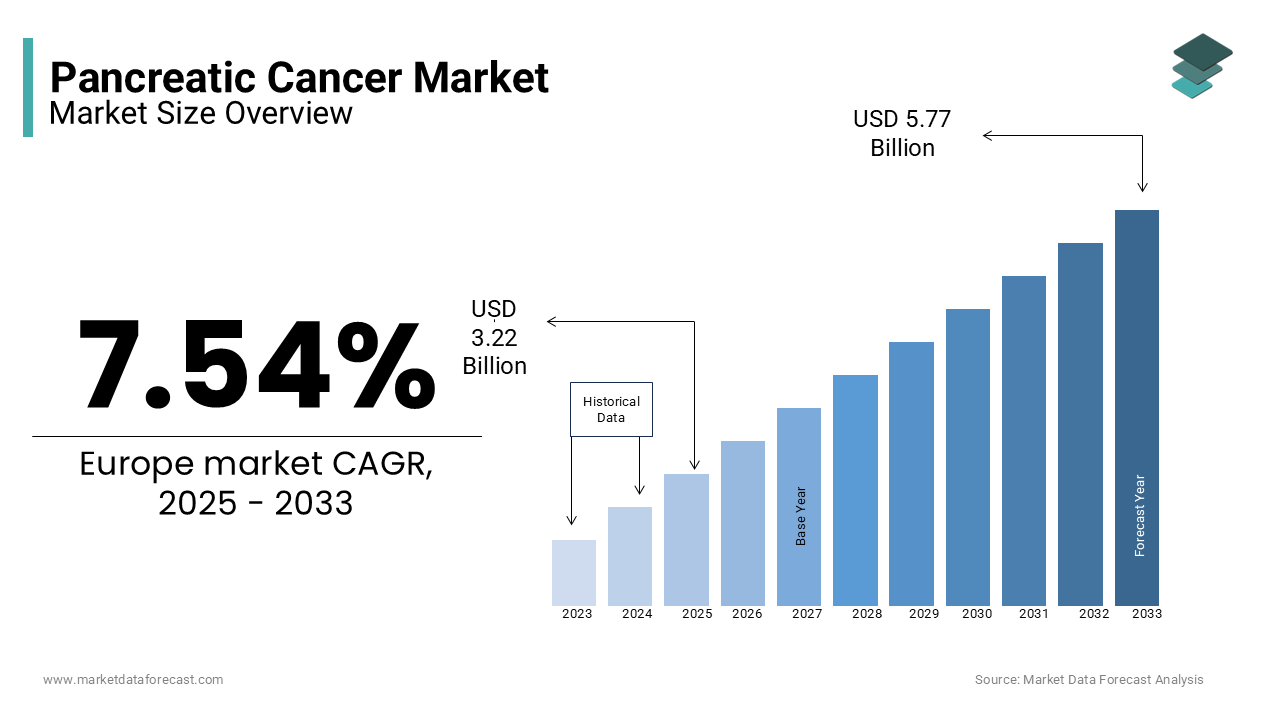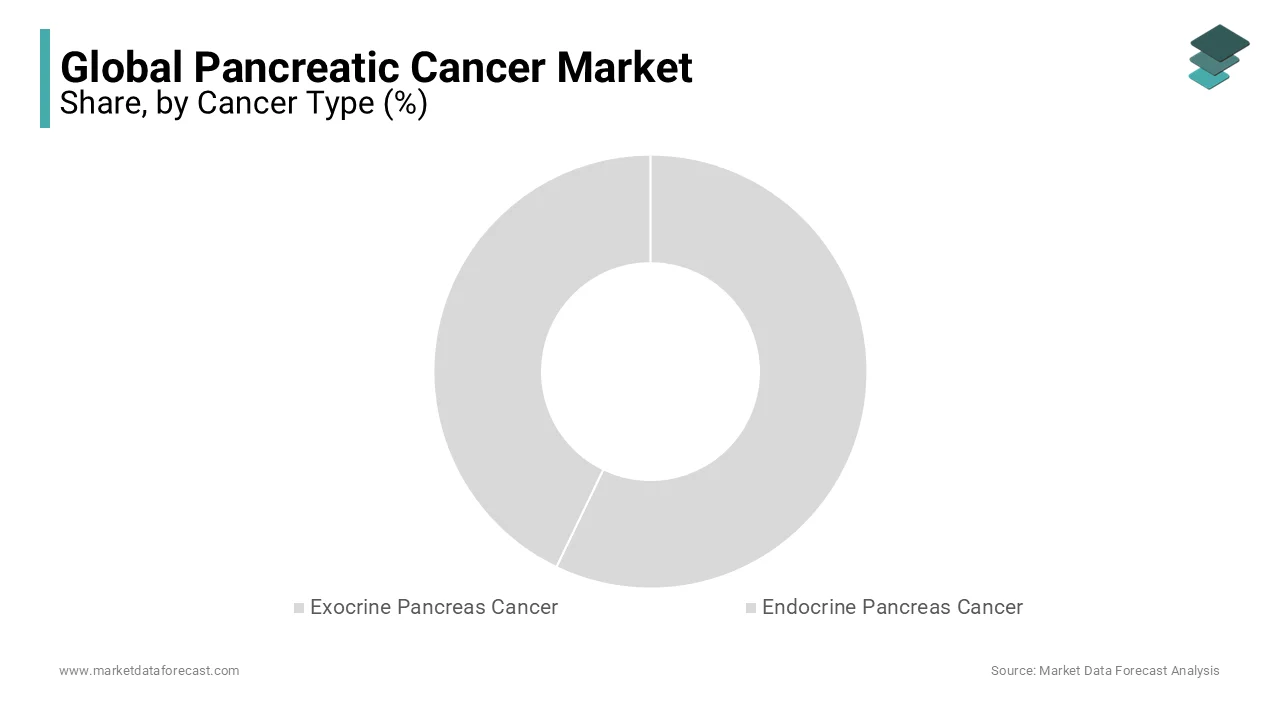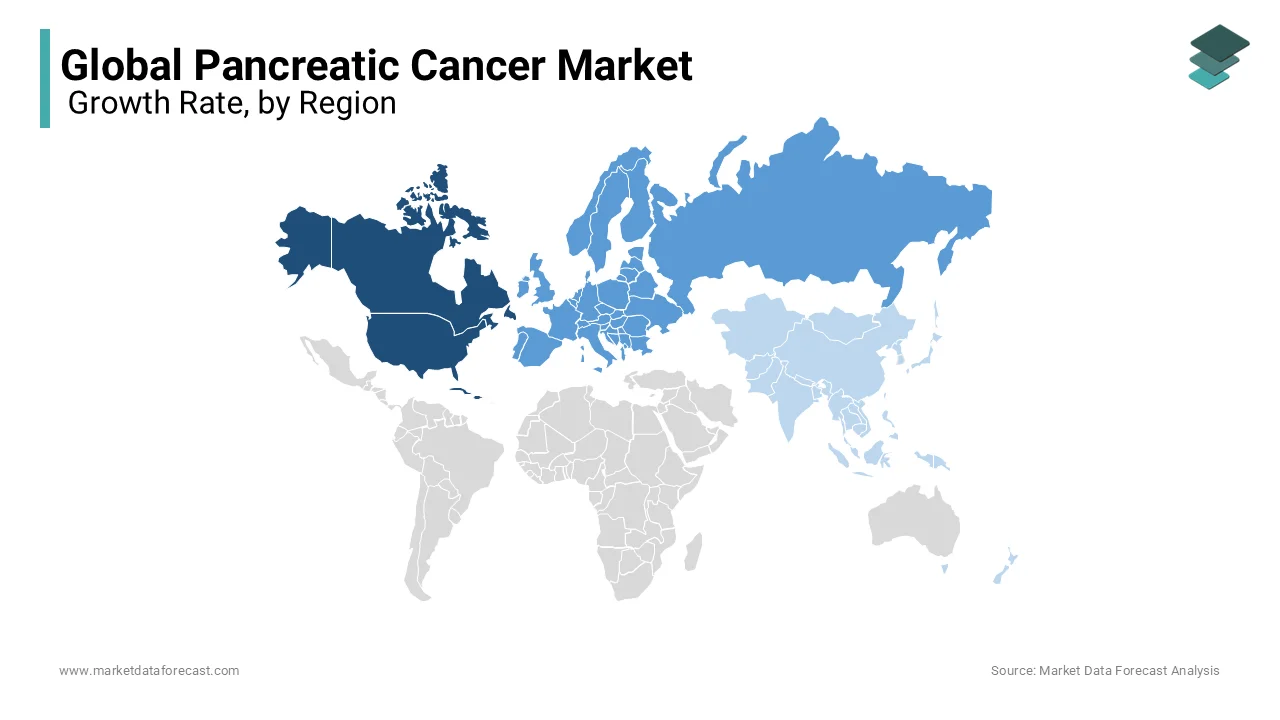Global Pancreatic Cancer Market Size, Share, Trends and Growth Forecast Report By Cancer Type (Exocrine and Endocrine), Type of Treatment (Surgery, Chemotherapy, Radiation Therapy and Others), End-User and Region (North America, Europe, APAC, Latin America, Middle East And Africa), Industry Analysis From 2025 to 2033
Global Pancreatic Cancer Market Size
The global pancreatic cancer market was valued at USD 2.99 billion in 2024. The global market is further anticipated to be worth USD 5.76 billion by 2033 from USD 3.22 billion in 2025, growing at a CAGR of 7.54% during the forecast period.

Pancreatic cancer is caused by the uncontrolled growth of cells in the pancreas. This abnormal, unrestrained growth of cells results in the formation of lumps of tissue, widely referred to as tumors. The presence of tumors prevents the normal functioning of the pancreas. Pancreatic cancer is identified as the uncontrolled growth of cells, i.e., malignant cells in the pancreas tissues. The malignant cells lead to tumor formation in the pancreas, which deters the organ's normal functioning. The occurrence and mortality rate of pancreatic cancer are higher in men than in women. SEER estimates that pancreatic cancer accounts for around seven percent of the total cancer deaths in the U.S. annually.
MARKET DRIVERS
Growing Prevalence of Pancreatic Cancer
The increasing pervasiveness of pancreatic cancer in developed nations due to the absence of therapeutic procedures for early-stage detection pushes the pancreatic cancer market. According to the American Society of Clinical Oncology (ASCO), 62210 adults from the United States are expected to be diagnosed with pancreatic cancer in 2023. The significant incidence of pancreatic cancer that initiates germline mutations is also expected to accelerate the market's growth rate. In addition, the growing demand for targeted therapy is another factor propelling the growth of the pancreatic cancer market. Targeted therapy singles out receptors in the cancer cells and does not affect the body's healthy peripheral cells, unlike conventional therapeutic' methods like chemotherapy. The increasing pervasiveness of pancreatic cancer and the demand for targeted therapy drive the market. NCI-sponsored research projects to support market growth.
There are several funded research projects by the National Cancer Institute dedicated to developing drugs and treatments for pancreatic cancer. Some examples of the funded projects are the Pancreatic Cancer Cohort Consortium, Pancreatic Cancer Detection Consortium (PCDC), Pancreatic Cancer Microenvironment Network (PaCMEN), Pancreatic Ductal Adenocarcinoma (PDAC) Stromal Reprogramming Consortium (PSRC), RAS Initiative, Pancreatic Specialized Programs of Research Excellence (Pancreatic SPOREs), etc. These programs have individual aims and motives and develop unique solutions for the disease. For example, the Pancreatic Specialized Programs of Research Excellence (Pancreatic SPOREs) is an initiative designed to swiftly integrate fundamental scientific discoveries into clinical settings. The Pancreatic SPORE grants promote innovative and various methods for preventing, detecting, diagnosing, and treating pancreatic cancer. Research on pancreatic cancer is also done by two of NCI's G.I. SPOREs.
MARKET RESTRAINTS
Affordable and efficient technologies for the timely diagnosis of pancreatic cancer are yet to develop fully. Therefore, most pancreatic cancer patients are diagnosed at an advanced level of the disease. In the advanced stage of pancreatic cancer, the therapy options are limited, leading to high mortality rates. These factors are restricting the growth of the market for pancreatic cancer therapeutics. In addition, surveys show that only a tiny percentage (about 12% to 15%) of patients are diagnosed immediately enough to be treated with surgical methods, drugs, and chemotherapy.
REPORT COVERAGE
|
REPORT METRIC |
DETAILS |
|
Market Size Available |
2024 to 2033 |
|
Base Year |
2024 |
|
Forecast Period |
2025 to 2033 |
|
Segments Covered |
By Type, Treatment Type, End Users, and Region |
|
Various Analyses Covered |
Global, Regional & Country Level Analysis, Segment-Level Analysis; DROC, PESTLE Analysis; Porter’s Five Forces Analysis, Competitive Landscape, Analyst Overview of Investment Opportunities |
|
Regions Covered |
North America, Europe, APAC, Latin America, Middle East & Africa |
|
Market Leaders Profiled |
Eli Lilly, Amgen Inc., Celgene Corp., F. Hoffmann-La Roche, Clovis Oncology Inc., Pfizer, Novartis AG, Threshold Pharmaceuticals Inc., Aduro BioTech Inc., Infinity Pharmaceuticals Inc., and NewLink Genetics Corp. |
SEGMENTAL ANALYSIS
By Cancer Type Insights
The exocrine segment is anticipated to account for the major share of the global market during the forecast period. Most pancreatic cancer patients diagnosed worldwide belong to the exocrine class. Therefore, the segment currently governs the market. Although less common, the endocrine type of cancer still anticipates effective treatment modalities. In addition, the investment in research and development is significant in both types of cancers. However, the growing prevalence and increasing reach of innovative techniques in developing countries are anticipated to drive the exocrine segment's growth during the forecast period.

By Treatment Type Insights
The surgery and radiology segments had the largest share of the global market in 2023 and are expected to dominate the market during the forecast period due to the prevalence of these procedures. This segment dominance can also be attributed to the popularity of targeted drugs and novel biological therapeutics. In addition, personalized care systems are supporting the expansion of the segment.
By End-User Insights
The hospital segment is the significant revenue-generating segment in the global pancreatic cancer therapeutics market, which is supposed to continue in the forecast years. The hospital segment is dominating due to the rapid influx of patients in hospitals due to qualified medical professionals and the availability of multiple facilities. In addition, hospitals also have better infrastructure and widespread reach, due to which the market is growing.
However, the clinical and research segment is also expected to grow during the forecast period. The growing opening of several clinics for healthcare worldwide promotes segment growth. Additionally, growing research and development activities toward cancer and government funding promote the segment's growth.
REGIONAL ANALYSIS
North America held the dominating share of the global market in 2023. This is because the prevalence of pancreatic cancer is higher in North American countries, with the U.S. having the highest number of cancer patients worldwide. As a result, North America dominated the pancreatic cancer treatment industry, with the largest revenue share in 2019. It is mainly attributed to the improved healthcare infrastructure, high adoption of pancreatic treatment procedures, and a large target population. Besides, an increasing incidence of pancreatic cancer is aggressively propelling the demand for treatment options.

Europe is expected to be the second-largest market for pancreatic cancer.
The Asia-Pacific is anticipated to be the fastest-growing region globally. On the other hand, Asia Pacific is expected to witness the fastest growth during the forecast period. The presence of well-established hospitals, critical care centers, and a large population suffering from pancreatic cancer would boost the market's development in the Asia Pacific region. Furthermore, with the growing number of pancreatic cancer cases in the Asia Pacific, the diagnosis and treatment of pancreatic cancer must adhere to the same regimen as in Western countries.
KEY MARKET PLAYERS
A few of the major companies operating in the global pancreatic cancer market profiled in the report are Eli Lilly, Amgen Inc., Celgene Corp., F. Hoffmann-La Roche, Clovis Oncology Inc., Pfizer, Novartis AG, Threshold Pharmaceuticals Inc., Aduro BioTech Inc., Infinity Pharmaceuticals Inc., and NewLink Genetics Corp.
RECENT HAPPENINGS IN THE MARKET
- In November 2023, Onivyde, treatment for pancreatic cancer, and chemotherapy were used in a regimen that helped prolong the lives of newly diagnosed patients with metastatic disease. This finding benefits Ipsen, the company that owns the drug, and the biotechnology company that developed the treatment in the first place. Ipsen said in a statement on Wednesday that a Phase 3 trial found that the Onivyde-chemo combination prolonged the lives of patients with pancreatic ductal adenocarcinoma compared to those who received a different chemo regimen.
- In December 2023, scientists created the world's first early pancreatic cancer screening test, which uses worms to detect tumors. The test, introduced this month in Japan, is said to be 100% accurate in identifying cancer and can catch it in the very early stages. By the end of next year, Tokyo-based biotech company Hirotsu Bio Science hopes to introduce the test in the U.S.
- In December 2023, the U.S. Food and Drug Administration (FDA) approved pelareorep in combination with Roche's anti-PD-L1 checkpoint inhibitor atezolizumab, the chemotherapy drugs gemcitabine, and nab-paclitaxel for the treatment of advanced or metastatic pancreatic ductal adenocarcinoma, according to Oncolytics Biotech® Inc. (NASDAQ: ONCY) (TSX: ONC).
- In November 2023, Ipsen sought to expand its oncology portfolio when it acquired Merrimack Pharmaceutical's pancreatic cancer treatment Onivyde in 2017 in a deal for up to $1 billion. The medication is now demonstrating its value in an earlier therapy scenario. In a phase 3 study, onivyde and chemotherapy, known as the Nalirifox regimen, helped patients with metastatic pancreatic ductal adenocarcinoma (mPDAC) live longer than they would have otherwise, according to Ipsen.
MARKET SEGMENTATION
This research report on the global pancreatic cancer market has been segmented and sub-segmented based on the cancer type, treatment type, end-users, and region.
By Cancer Type
- Exocrine Pancreas Cancer
- Endocrine Pancreas Cancer
By Treatment Type
- Surgery
- Chemotherapy
- Radiation Therapy
- Others
By End User
- Hospitals
- Clinics
- Research Institutes
- Others
By Region
- North America
- Europe
- Asia Pacific
- Latin America
- The Middle East and Africa
Frequently Asked Questions
Which region led the pancreatic cancer market in 2024?
North America had domination in the global market in 2024.
Who are the leading companies in the pancreatic cancer market?
Eli Lilly, Amgen Inc., Celgene Corp., F. Hoffmann-La Roche, Clovis Oncology Inc., Pfizer, Novartis AG, Threshold Pharmaceuticals Inc., Aduro BioTech Inc., Infinity Pharmaceuticals Inc., and NewLink Genetics Corp. are some of the notable companies in the market.
How much was the global pancreatic cancer market worth in 2024?
The global pancreatic cancer market size was valued at USD 2.99 billion in 2024.
Does this report include the impact of COVID-19 on the pancreatic cancer market?
Yes, we have studied and included the COVID-19 impact on the global pancreatic cancer market in this report.
Related Reports
Access the study in MULTIPLE FORMATS
Purchase options starting from $ 2500
Didn’t find what you’re looking for?
TALK TO OUR ANALYST TEAM
Need something within your budget?
NO WORRIES! WE GOT YOU COVERED!
Call us on: +1 888 702 9696 (U.S Toll Free)
Write to us: [email protected]
